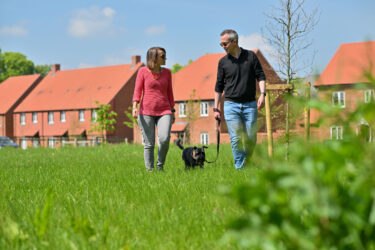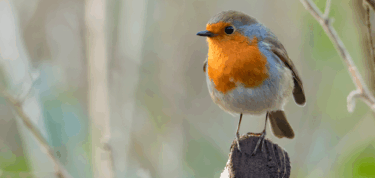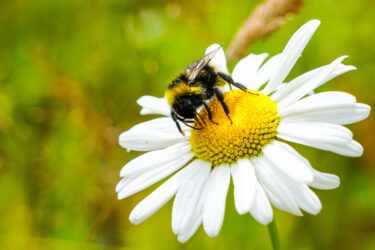Nature is in crisis with wild spaces disappearing and species in staggering decline.
At the same time, we need new homes, workplaces, schools and other critical infrastructure. Biodiversity net gain and other nature-based solutions help us strike the right balance.
Let’s stop choosing between nature and development and explore a better way forward.
Decline of wildlife in England since 1970
Species threatened with extinction
Decrease in plant species distribution
Decline in invertebrate species since 1970

PUTTING NATURE FIRST
Reimagining the balance between housing and habitats.
Wates Wildscape is about doing things differently. We create dedicated habitat sites that restore biodiversity, support ecosystems, and help meet legal biodiversity net gain requirements. Alongside this, we are bringing forward our first suitable alternative natural greenspace (SANG). For Wates Wildscape, it’s more than compliance – it’s about making space for nature in the way we plan, design and build.
Each habitat site is designed to respond to it’s natural surroundings, helping to bring nature back to places where it’s been pushed out and providing much-needed offsite biodiversity net gain units for landowners and developers.
Combining our passion for sustainability with our development expertise, we work with nature to create high-quality habitats and nature-based solutions where people and wildlife can thrive.”

Olivia Dear
Sustainability & Engagement Director
Reversing biodiversity decline and supporting landowners and developers
We design and deliver high-quality, ecologically valuable habitat sites that generate BNG units. These habitat sites provide developers with a reliable, compliant route to meet planning obligations, while also creating wild spaces for nature to flourish.
We create species-rich grasslands that support pollinators and other wildlife, while being low-maintenance and adaptable to many landscapes. These habitats are ideal for offsetting biodiversity loss from urban development.
Native woodlands and transitional scrub areas help lock in carbon, enhance biodiversity, and support a wide range of bird and mammal species. They’re long-term investments in ecological recovery.
Wet habitats like reedbeds, ponds and floodplains support amphibians, insects, and water birds — and help with natural flood management and water quality improvement.
Linear habitats like hedgerows create vital ecological corridors for wildlife. They also enhance connectivity between habitats, boosting the value of neighbouring green spaces.
Every site is different. We can work with landowners and developers to design bespoke habitat packages that align with local planning needs and deliver measurable biodiversity uplift.

BUILT ON EXPERIENCE
At Wates we have a long-term vision for nature
When it comes to biodiversity net gain, we understand what’s at stake. As developers ourselves, we know about commercial pressures and planning challenges. At Wates Wildspace, we focus on providing practical, dependable nature-based solutions.
We bring together our knowledge of land, construction, and environmental planning to create sites that work — for developers and wildlife alike. Every site is designed for long-term impact, with management plans in place for 30 years and beyond.
This isn’t a one-off project. Over time, it will be a national network of biodiverse spaces that will help to reverse nature’s decline and unlock land value while doing the right thing for the planet.
A simple, proven route to secure your BNG units
We make it easy for developers and project owners to meet their biodiversity net gain obligations when on-site solutions aren’t viable. Our process is straightforward, transparent and tailored to your project’s needs.
If your development can’t achieve the mandatory 10 per cent biodiversity net gain on site, your appointed ecologist will prepare a statutory metric to explain the shortfall.
Contact us and provide:
- Expected date for planning condition discharge
- The statutory metric
- Scheme location
- Estimated number of BNG units required
- Broad habitat types and distinctiveness
We’ll review the statutory metric and send you a detailed quote within two to five business days. This will include:
- Any legal or admin fees
- Types of units we can provide
- Their proximity to your site (local, adjacent or national)
- Unit cost
Once you’re happy, you will sign a unit allocation agreement and pay a 10 per cent non-refundable reservation fee (deducted from the total). This secures your units for 12 months (or more can be negotiated if planning timeframes are longer).
When you’re ready to discharge the planning condition, the remaining balance is paid. We then formally allocate the units to your scheme on the Defra BNG register and provide written confirmation for your planning documents.
With the allocation confirmed, your planning condition is officially discharged — and you’ve helped create space for nature to thrive.



